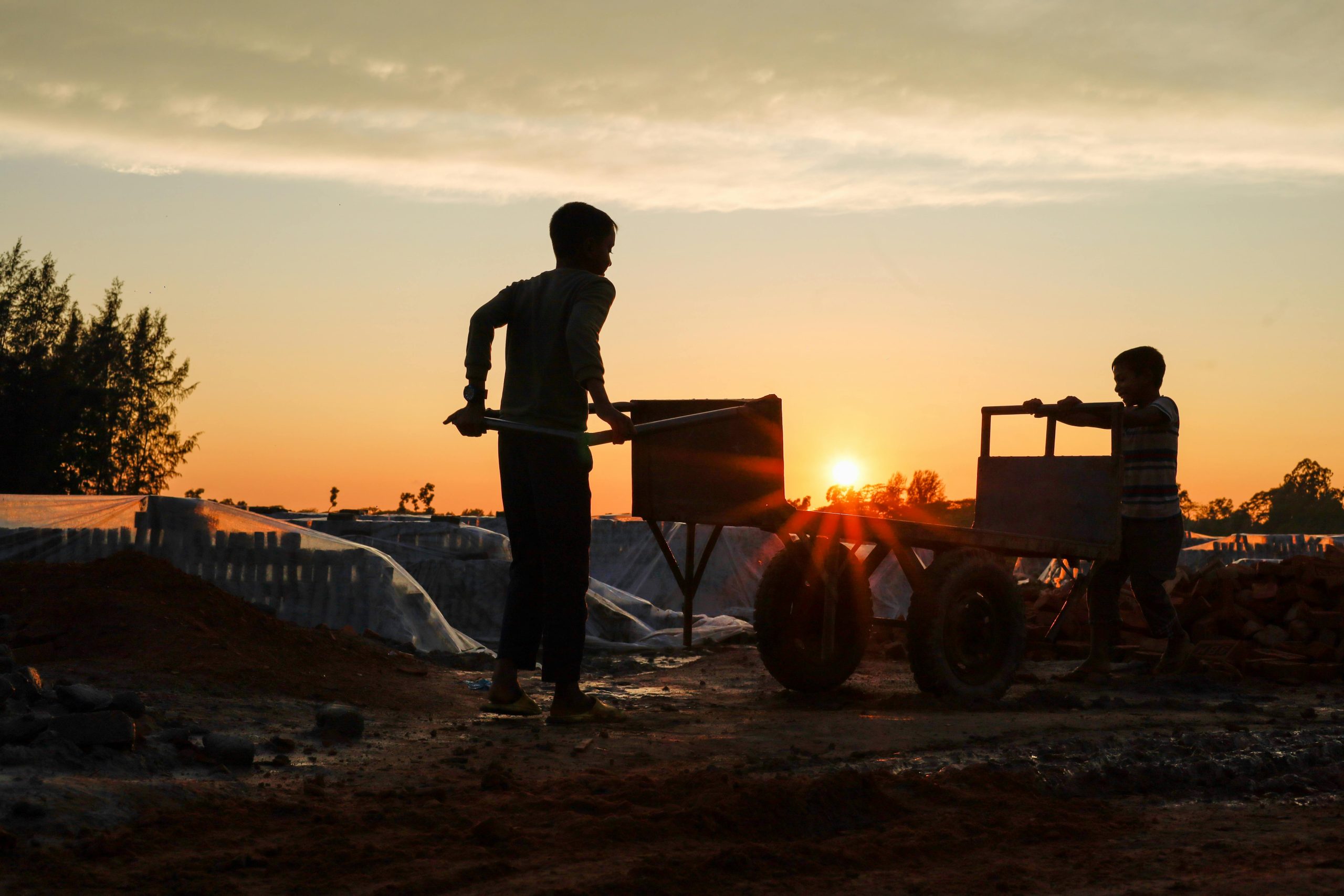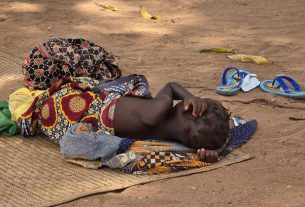In the shadows of Nigeria’s booming unregulated mining sector, thousands of children toil in dangerous conditions, digging for minerals, metals, and rare earths in order to survive. While the country is rich in natural resources and its mining sector continues to grow, the lack of effective regulation has led to a rise in child labor, with many children working in hazardous, life-threatening conditions to support their families. These young miners face a daily struggle to stay healthy, but the question remains: how else could they survive if they didn’t work in the mines?
The Unregulated Mining Boom and Its Toll on Children
Nigeria, one of the largest producers of solid minerals in Africa, has seen its mining industry grow at an unprecedented rate in recent years. The extraction of minerals like gold, tin, columbite, and rare earth metals has surged, despite the lack of effective regulation and oversight. According to estimates, the country loses over $10 billion annually in potential revenue due to illegal and unregulated mining activities.
However, the soaring demand for minerals—driven both by international markets and internal pressures—has led to a rise in unlicensed mining operations, many of which employ children. Children as young as 7 or 8 can be seen working in dangerous, poorly constructed mine shafts, performing grueling tasks like digging, carrying heavy loads, and processing minerals without proper safety gear.
The Hidden Cost of Child Labor in the Mining Sector
The working conditions in Nigeria’s illegal mining sector are shockingly unsafe. Children work in mines without basic protective equipment, and many are exposed to toxic chemicals, dust, and dangerous machinery. They also face the risk of cave-ins and respiratory diseases due to prolonged exposure to dust and chemicals. The work is physically demanding and often leads to long-term health issues, including musculoskeletal disorders, lung diseases, and injuries from mining tools and machinery.
The wages for these children are meager, with many earning just a fraction of the amount that would be considered acceptable for adult labor. According to local reports, child miners often earn less than $1 per day for their labor, which is not enough to provide for themselves or their families in the long term. Yet, for many children in rural Nigeria, these jobs represent a critical lifeline in an environment where there are few other employment opportunities.
Why Do Children Work in the Mines?
Despite the significant risks, child labor in Nigeria’s mining sector is often seen as a necessity for survival. Poverty and a lack of access to quality education, especially in remote areas, force many children into the workforce. In rural Nigeria, where agriculture and mining are the primary sources of income, families struggle to make ends meet, and many children are pushed into mining as a means of contributing to the household income.
For some families, mining is the only option. Local economies in areas with rich mineral deposits often revolve entirely around mining activities, leaving few alternatives for work. Many of these communities lack access to basic services such as education, healthcare, and infrastructure, and the lack of formal job opportunities means that children are often seen as assets who can help bring in much-needed income.
The Dilemma: Health Risks vs. Survival
The situation of child miners in Nigeria presents a difficult dilemma: while their work exposes them to grave health risks, without it, many children and their families would face even more dire circumstances. The high unemployment rate, particularly in rural areas, and the lack of education options mean that for many children, the alternative to working in the mines is starvation or homelessness.
In northern Nigeria, where poverty levels are particularly high, families often rely on income from their children’s labor to pay for food, shelter, and basic needs. Without this income, the alternatives may include begging, child trafficking, or other forms of exploitative work in the informal sector.
While international human rights organizations continue to push for reforms to end child labor in the mining sector, the economic realities on the ground are harsh. Children often report that they feel they have little choice but to work. A 10-year-old child miner in Zamfara State (a region rich in gold deposits) explained, “I work because my parents cannot afford to feed us. If I don’t, my family won’t survive.”
The Government’s Failure to Regulate
The lack of regulation in Nigeria’s mining sector has been one of the main contributors to the rise of child labor. Illegal mining operations, which often operate outside the purview of government oversight, are typically poorly regulated. In many cases, children are employed by illegal miners who know that they can exploit vulnerable populations without fear of repercussions.
The Nigerian government has acknowledged the issue, but enforcement of laws related to child labor in mining has been inconsistent. Although there are laws in place to prohibit the use of child labor in hazardous work, they are rarely enforced in the informal mining sector. Moreover, many areas of the country lack adequate monitoring systems and resources to identify and address illegal mining activities.
Several non-governmental organizations (NGOs) have tried to intervene, advocating for improved child welfare services and alternative livelihood programs, but these efforts have been hindered by the country’s limited resources and ongoing instability in certain regions.
Possible Solutions: What Needs to Change?
Addressing child labor in Nigeria’s mining sector will require a comprehensive approach that addresses both the root causes and the immediate consequences of child mining.
- Improved Enforcement of Child Labor Laws: The Nigerian government must ensure stronger enforcement of existing labor laws and regulations, especially in the informal mining sector. This includes crackdowns on illegal mining operations that exploit children and holding operators accountable.
- Access to Education: One of the most effective ways to break the cycle of child labor in mining is to improve access to education. Many children are forced to work in the mines because their families cannot afford schooling. The Nigerian government, alongside international donors, must invest in making primary and secondary education accessible to all children, especially in rural areas.
- Alternative Livelihood Programs: Providing families with alternative sources of income could reduce the reliance on child labor. Programs that offer vocational training, microloans, and support for sustainable agriculture or non-mining jobs would help alleviate the economic pressures that force children into hazardous work.
- Public Awareness Campaigns: There needs to be greater awareness of the dangers of child labor, both among local communities and the general public. Education campaigns can encourage families to send children to school rather than to the mines, while also informing mine operators about the risks of exploiting children.
- International Support and Monitoring: The international community, including NGOs, the United Nations, and other human rights organizations, must continue to apply pressure on the Nigerian government to uphold child labor laws and improve the living conditions of families in mining regions. Global supply chains that source minerals from Nigeria should also be monitored to ensure they are not indirectly supporting child labor.
Conclusion: A Harsh Reality
The plight of child miners in Nigeria underscores the harsh realities of life in one of Africa’s poorest regions. While many of these children risk their lives for just a few dollars a day, the lack of alternatives leaves them with little choice but to work in the mines. Until systemic issues such as poverty, lack of education, and government inaction are addressed, child labor in Nigeria’s mining sector will likely continue, posing significant challenges for both the children involved and the nation’s long-term development.
The solution to this problem lies not just in enforcing laws but also in addressing the economic pressures that drive families to turn to child labor. Only by improving education, alternative employment opportunities, and basic social services can Nigeria hope to break the cycle of exploitation that traps these children in a cycle of poverty and danger.
References:
- Human Rights Watch – “Nigeria: End Child Labor in Mining”
- International Labour Organization (ILO) – “Child Labor in the Mining Sector”
- BBC News – “Children Working in Nigeria’s Illegal Mines Face Health Risks”
- The Guardian – “Nigeria’s Mining Boom Costs More Than Money: The Price of Child Labor”
- The Nigerian Government Report on Child Labor – “Overview of Child Labor in the Mining Sector”
- United Nations International Children’s Emergency Fund (UNICEF) – “The Impact of Child Labor on Nigeria’s Future”



